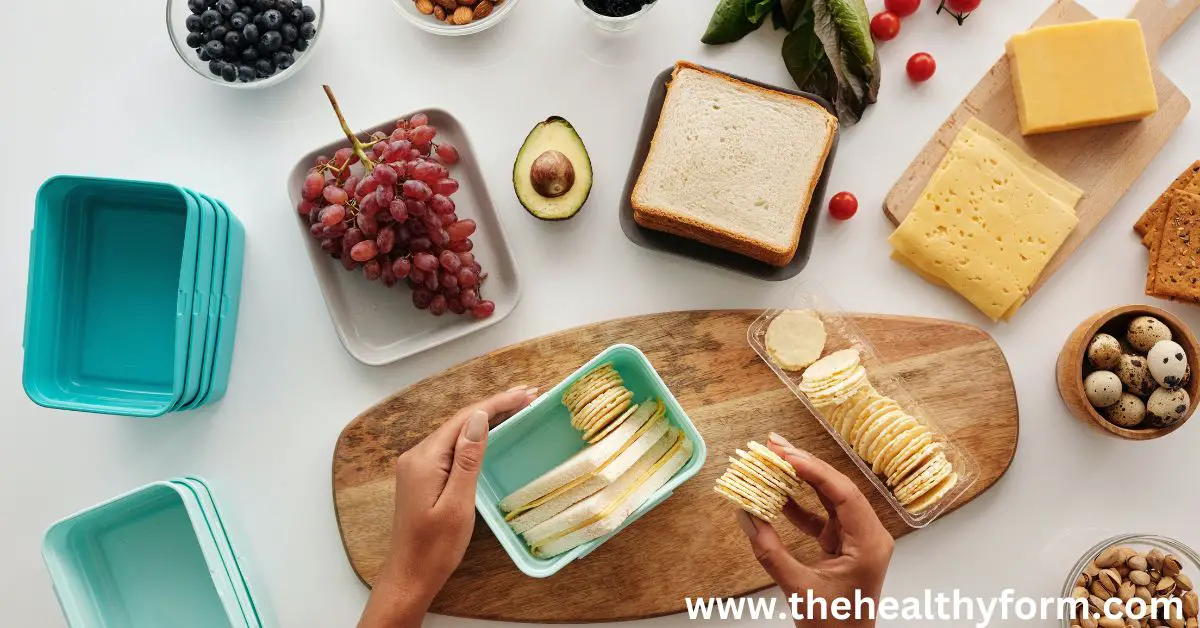The Ultimate Guide to Baby Feeding For New Parents
Looking for tips and advice on baby feeding? Our comprehensive guide covers everything from breastfeeding to formula feeding, introducing solid foods, and troubleshooting common feeding challenges. Get expert advice and make feeding your baby a stress-free and enjoyable experience. Baby feeding can be one of the most rewarding, but also one of the most challenging, aspects of parenting. From breastfeeding and bottle feeding to introducing solids and managing picky eaters, there is much to consider when nourishing your little one. This guide will cover everything you need to know about baby feeding, including what to feed your baby at different stages of development and how to feed them safely, healthily, and enjoyably.

What to Feed a 6-Month-Old?
At around six months, your baby is ready to start introducing solid foods in addition to breast milk or Formula. It’s important to choose nutrient-rich foods that will help your baby grow and develop and foods that are easy for them to chew and swallow. Some good options for a 6-month-old include pureed fruits and vegetables, such as applesauce, mashed bananas, and pureed sweet potatoes. You can also try iron-rich foods like pureed meats and iron-fortified cereals. It’s a good idea to introduce various foods to expose your baby to different flavors and textures but avoid any foods that are choking hazards, such as whole nuts or hard candies.
What to Feed a 9-Month-Old?
As your baby approaches their first birthday, it can handle more textured foods and may be ready to start finger foods. In addition to continuing to offer pureed fruits and vegetables, you can try introducing soft, mashed foods that your baby can pick up and eat with their fingers, such as scrambled eggs, soft cooked beans, and small pieces of soft fruit or cooked vegetables. You can also continue to offer iron-rich foods like pureed meats and iron-fortified cereals. Always supervise your baby while eating, and avoid any foods that could be choking hazards.
What to Feed a One-Year-Old?
By the time your baby is one year old, they should be able to eat most of the same foods that the rest of the family eats, as long as they are cut into small pieces and soft enough to chew and swallow easily. You can offer a variety of fruits, vegetables, grains, proteins, and dairy products, as well as finger foods that they can pick up and eat on their own. It’s also a good idea to continue to offer iron-rich foods, as iron is important for a child’s growth and development.

What to Feed a Picky Eater?
It’s normal for babies and young children to be picky eaters at times, and there are a few strategies you can try to help encourage your child to try new foods. One is to offer a variety of foods and let your child choose what they want to eat. You can also try serving new foods and familiar favorites or letting your child help prepare the meal by letting them choose ingredients or helping to mix and stir. Please don’t force your child to eat something they don’t want, but encourage them to try a small bite. Over time, they may learn to enjoy new foods.
What to Feed a Baby with Allergies?
If your baby has a food allergy, it’s important to avoid allergenic food and offer a variety of other nutrient-rich foods to ensure that your baby gets the nutrients they need. Talk to your healthcare provider or a registered dietitian for guidance on what foods are safe for your baby. Some common food allergies in babies include peanuts, tree nuts, milk, eggs, soy, wheat, fish, and shellfish. If you suspect your baby has a food allergy, seeking medical attention as soon as possible is important.

What to Feed a Baby to Help Them Sleep?
Getting enough sleep is important for a baby’s overall health and development, and certain foods may help your baby sleep better. Some options include warm milk, oatmeal, and bananas, which contain sleep-promoting compounds like tryptophan and melatonin. Establishing a bedtime routine and creating a comfortable sleep environment for your baby is also a good idea.
What to Feed a Breastfeeding Mother?
Eating a varied, balanced diet is important if breastfeeding ensures you get the nutrients you need to support your and your baby’s health. In addition to following a healthy eating pattern, it’s a good idea to drink plenty of fluids, avoid alcohol and caffeine, and take a daily prenatal vitamin. If you have any concerns about your diet or your baby’s feeding, you should talk to your healthcare provider or a lactation consultant.
How to Introduce Solids to a Baby?
Introducing solids to a baby is an exciting milestone, but it’s also an important time to be careful about what and how you feed your baby. It’s generally recommended to wait until around six months to introduce solids and start with single-ingredient purees of iron-rich foods like pureed meats and iron-fortified cereals. Gradually introduce a variety of pureed fruits and vegetables, and then move on to more textured foods as your baby ages. Be sure to watch for any signs of allergies, and talk to your healthcare provider if you have any concerns.
How to Make Homemade Baby Food?
Making homemade baby food can be a healthy and cost-effective option, and it’s also a great way to expose your baby to various flavors and textures. To make homemade baby food, choose a fresh, ripe fruit or vegetable, wash it, peel it if necessary, and cut it into small pieces. Boil, steam, or bake the fruit or vegetable until it is soft, and then puree it in a blender or food processor until it reaches the desired consistency. Add water, breast milk, or Formula to thin the puree if needed.
How to Transition from Breast Milk to Formula?
If you switch from breastfeeding to formula feeding, it’s important to do it gradually to give your baby time to adjust. Start by replacing one breastfeeding session with a bottle of Formula, and gradually increase the number of formula feedings over a few weeks. It’s a good idea to choose a formula appropriate for your baby’s age and follow the instructions on the formula package for mixing and feeding. If you have any concerns about the transition, you should talk to your healthcare provider or a lactation consultant.
How to Bottle Feed a Newborn?
Bottle feeding a newborn requires a little practice and patience, but it can be a rewarding experience for you and your baby. To bottle feed a newborn, choose a bottle and nipple appropriate for your baby’s age and development. Then, prepare the Formula according to the instructions on the formula package, and test the temperature of the Formula by dripping a few drops on the inside of your wrist. Hold the bottle with the nipple filled with Formula in the crook of your arm, and support your baby’s head and neck while they drink.
It’s important to pay attention to your baby’s feeding cues and to stop feeding when they show signs of being full, such as turning their head away or falling asleep. If you have concerns about bottle feeding, you should talk to your healthcare provider or a lactation consultant.
How to Transition from Bottle to Cup?
As your baby ages, it’s a good idea to start transitioning them from a bottle to a cup. This can help to prevent tooth decay and promote healthy feeding habits. There are a few different approaches you can take to the bottle-to-cup transition. One option is to offer a sippy cup with a soft spout or a straw cup as an alternative to a bottle. You can also try offering a cup at mealtimes and gradually decreasing the number of bottle feedings. It’s important to be patient and to let your baby lead the way, as every child is different.
How to Wean a Baby from Breastfeeding?
Weaning a baby from breastfeeding is a natural process that happens gradually over time. It’s important to be patient and to let your baby lead the way, as every child is different. Some signs that your baby is ready to wean include showing less interest in breastfeeding, rejecting the breast, or showing an interest in solid foods. To wean your baby, replace one breastfeeding session with a bottle or cup of Formula or milk and gradually increase the number of non-breastmilk feedings over time. It’s a good idea to talk to your healthcare provider or a lactation consultant if you have concerns about the weaning process.
How to Increase Milk Supply for Breastfeeding?
If you are breastfeeding and concerned about your milk supply, you can try a few strategies to help increase it. One option is to breastfeed or pump more frequently; the more your baby nurses or breast empties, the more milk your body will produce. You can also try herbal supplements or lactation teas and ensure you get enough fluids and nutrients. It’s also a good idea to avoid any medications or herbs that could affect your milk supply and to seek the guidance of a lactation consultant if you have any concerns.
FAQ about Baby Feeding
Here are some of the most common questions people have about baby feeding are:
What is baby feeding?
Baby feeding refers to providing nourishment to infants or young children.
What are some signs that my baby is hungry?
Some signs your baby is hungry may include rooting, sucking on fists or fingers, fussiness, and crying.
What are some good first foods to introduce to my baby?
Some good first foods to introduce to your baby include pureed fruits and vegetables, infant cereals, and pureed meats.
How do I know if my baby is getting enough to eat?
Your baby’s weight gain and diaper output can indicate that they are getting enough to eat. It’s also important to pay attention to their behavior and overall health.
Conclusion
Baby feeding can be a challenging but rewarding aspect of parenting. By understanding what to feed your baby at different stages of development and how to feed them safely and effectively, you can provide your little one with the nourishment they need to grow and thrive. Remember always to follow the guidance of your healthcare provider or a registered dietitian and to seek help if you have any concerns.





